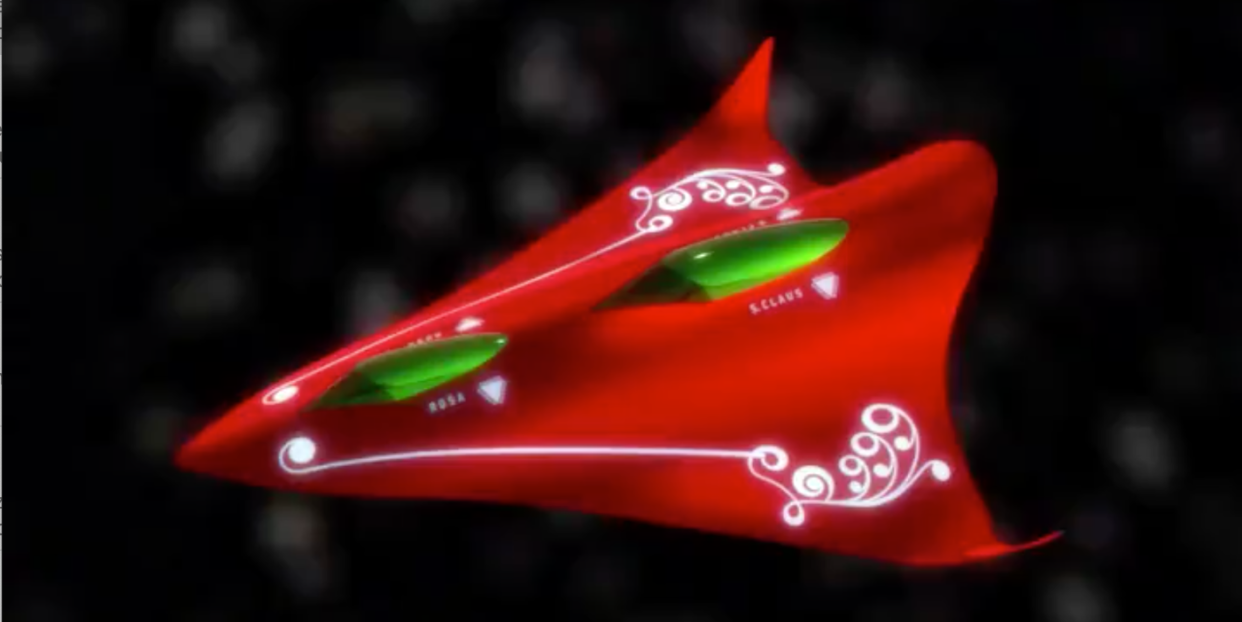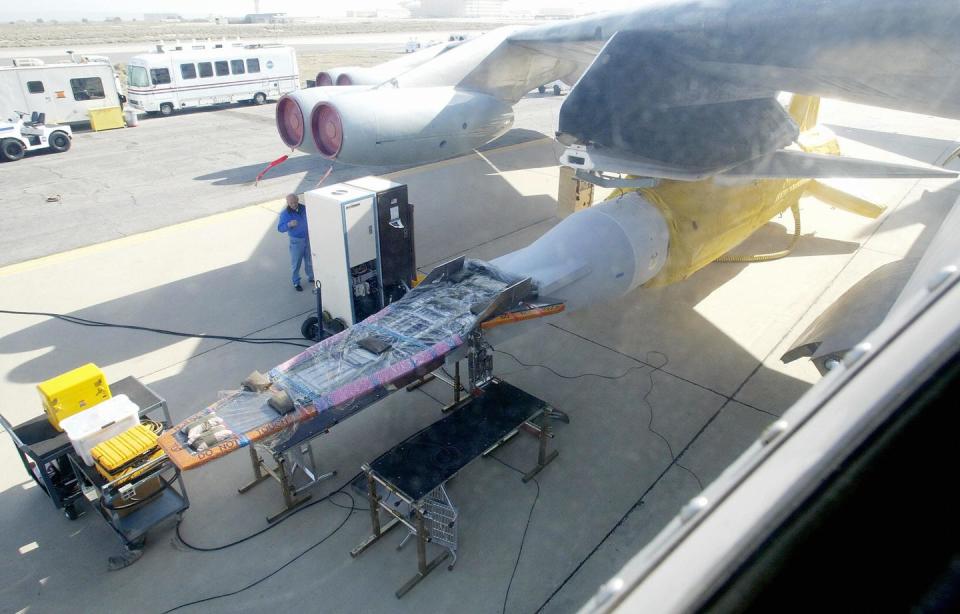The Air Force Redesigned Santa’s Sleigh for Hypersonic Speed

The U.S. Air Force showed off a rendering of a hypersonic Santa sleigh.
A hypersonic sleigh would be capable of moving at up to 13,000 miles an hour.
Mathematics, however, calculates Santa’s real sleigh is much, much faster—but the Air Force’s design may be safer.
The U.S. Air Force Research Lab (AFRL), getting in on the Christmas spirit, posted a rendering of a new sleigh for Santa Claus to make his annual gift-giving trip. The new sleigh, dubbed the “Hypersleigh,” is actually considerably slower than Santa’s existing ride. However, the Air Force’s design could end up saving Christma, as physics proves the existing sleigh moves too fast, exposing the jolly fat man and his eight reindeer to extreme danger.
After a month of research and deliberation, ROSA is excited to showcase Santa's new means of travel.
We're proud to showcase, the #Hypersleigh!#aFResearchLabElf #ElfontheShelf #HappyHolidays pic.twitter.com/pYCtcbyfHr— Air Force Research Lab - AFRL (@AFResearchLab) December 22, 2019
The Air Force's vehicle is called the Hypersleigh, and is clearly meant for hypersonic travel. The Hypersleigh is a triangular shaped craft with a pair of low, delta-shaped wings that curl upward at the tips. The vehicle has two cockpits stacked on top of one another, and what appears to be a payload bay—no doubt for Christmas presents—behind the upper cockpit.
The Hypersleigh has a flat underside painted black, and possibly heat-resistant tiles that prevent the cockpit from getting too hot when Santa criss-crosses continents. The Space Shuttle had a similar arrangement, and the X-37B unmanned space plane had similar arrangements. In true sleigh fashion, it has retractable ski legs.
In-between the ski legs is an air intake, suggesting it has an air breathing engine. This is probably a scramjet engine. Like other jet engines, scramjets take in air and expel it and other gases after being heated by burning fuel. Most air-breathing engines slow down the air to subsonic speeds before pushing it through the combustion chamber; scramjets, meanwhile, take in air at supersonic (or higher) speeds. More air equals more thrust, and a scramjet-powered vehicle has a theoretical top speed of Mach 17, or 13,043 miles an hour.

The AFRL design needs a bit of help, however. Scramjet engines only start to work at higher Mach numbers, so the Hypersleigh would need a rocket or jet engines to give it a boost. The scramjet would kick in at Mach 4, whereupon the Hypersleigh could jettison the boosters and hopefully, recycle them for use next Christmas.
But is the Hypersleigh too slow? A long time ago on the Internet, astronomer and astrophysicist Linda Harden calculated that Santa’s real sleigh clocked in at Mach 3,000, or 650 miles per second. Assuming there are 91.8 million children waiting for Santa Claus on Christmas night...
Assuming that each of these 91.8 million stops are evenly distributed around the earth (which, of course, we know to be false but for the purposes of our calculations we will accept), we are now talking about .78 miles per household, a total trip of 75-1/2 million miles, not counting stops to do what most of us must do at least once every 31 hours, plus feeding etc.
This means that Santa's sleigh is moving at 650 miles per second, 3,000 times the speed of sound. For purposes of comparison, the fastest man- made vehicle on earth, the Ulysses space probe, moves at a poky 27.4 miles per second - a conventional reindeer can run, tops, 15 miles per hour.

All of this makes the Hypersleigh sound rather pokey—except when you consider the physics of Santa’s trip. Harden calculated the effects of a 353,000-ton (think of all the presents) sleigh moving at 650 miles per second ... and it isn’t pretty.
The lead pair of reindeer will absorb 14.3 QUINTILLION joules of energy. Per second. In short, they will burst into flame almost instantaneously, exposing the reindeer behind them, and create deafening sonic booms in their wake.The entire reindeer team will be vaporized within 4.26 thousandths of a second. Santa, meanwhile, will be subjected to centrifugal forces 17,500.06 times greater than gravity. A 250-pound Santa (which seems ludicrously slim)would be pinned to the back of his sleigh by 4,315,015 pounds of force.
Yikes. Given all of that, maybe it would be a good thing to dial Santa’s ride back to the Hypersleigh’s modest Mach 3.59 miles a second. It might take much longer for Santa to complete his trip, but the children of the Earth probably wouldn't object to a month of Christmas. Santa, who would would otherwise be flattened like a pancake, would likely agree.
You Might Also Like

